Minium encased in Flourite cubes. Magnification 20x.
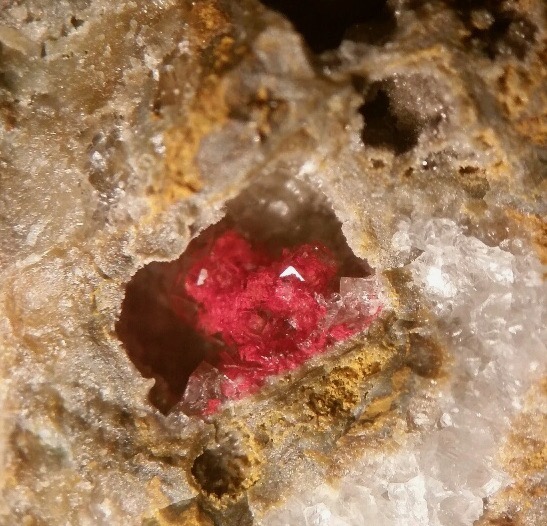
Minium encased in Flourite cubes. Magnification 20x.

Flourite cube formed on Quartz crystal. To the left is weathered Dolomite covered in Calcite crystals. Magnification 20x.
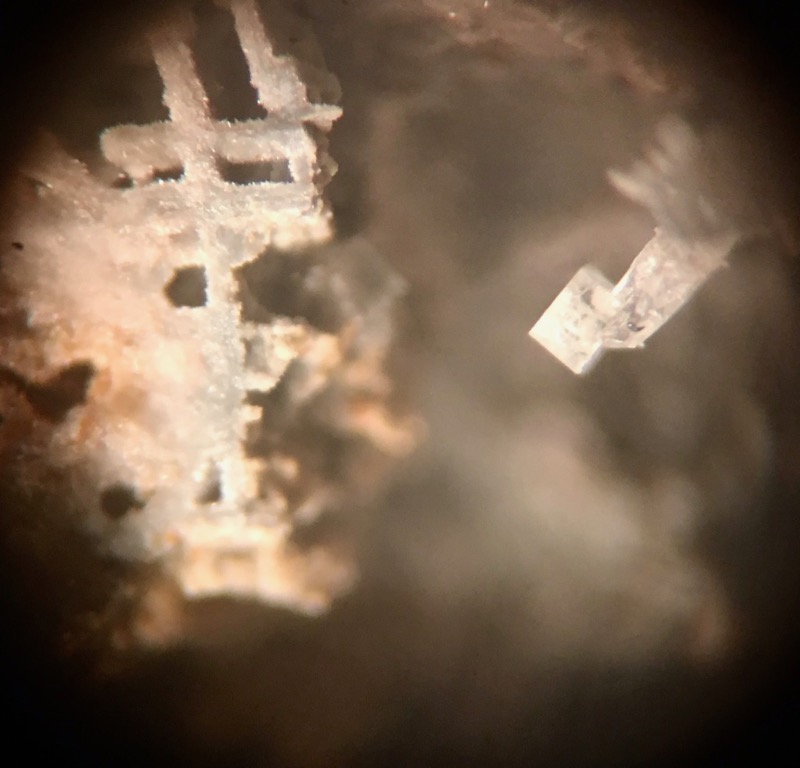
Flourite cubes on Pyromorphite.
Wulfenite crystals with Pyromorphite. Magnification 20x.
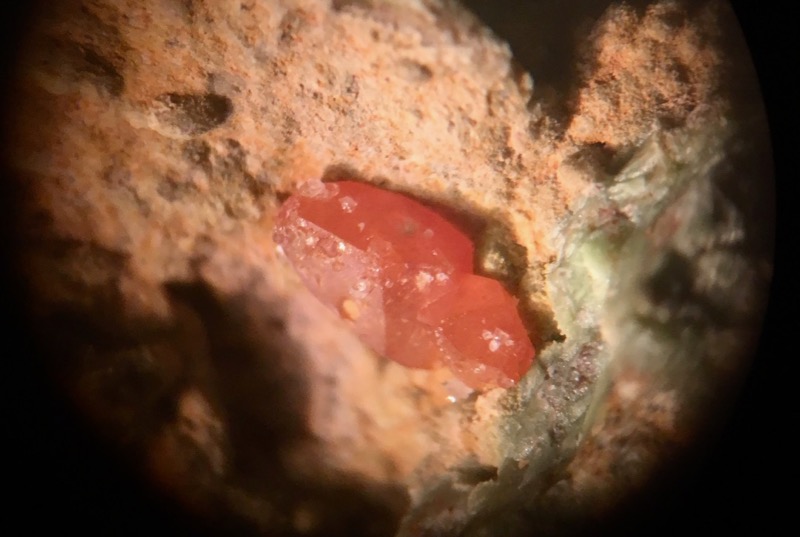
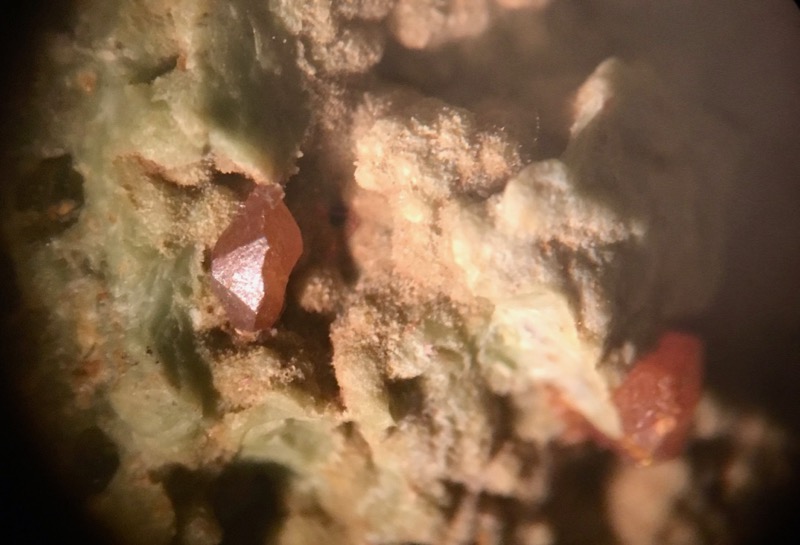
Hematite stained Quartz seam seen in shale. Magnification 20x.
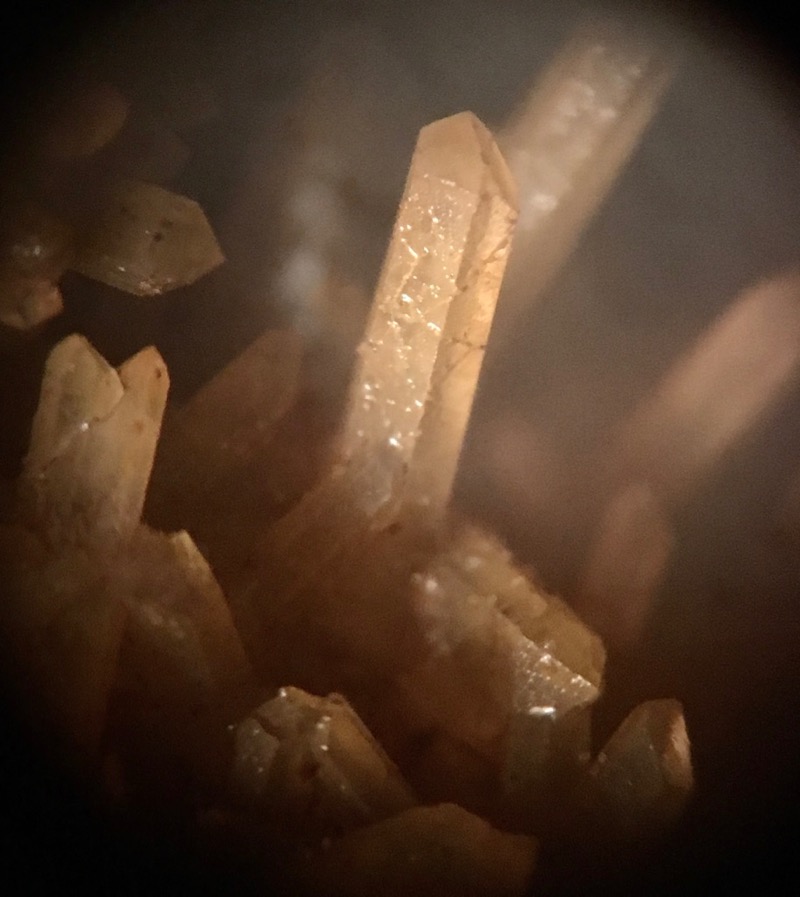
Scalenohedral Calcite. Magnification 20x.
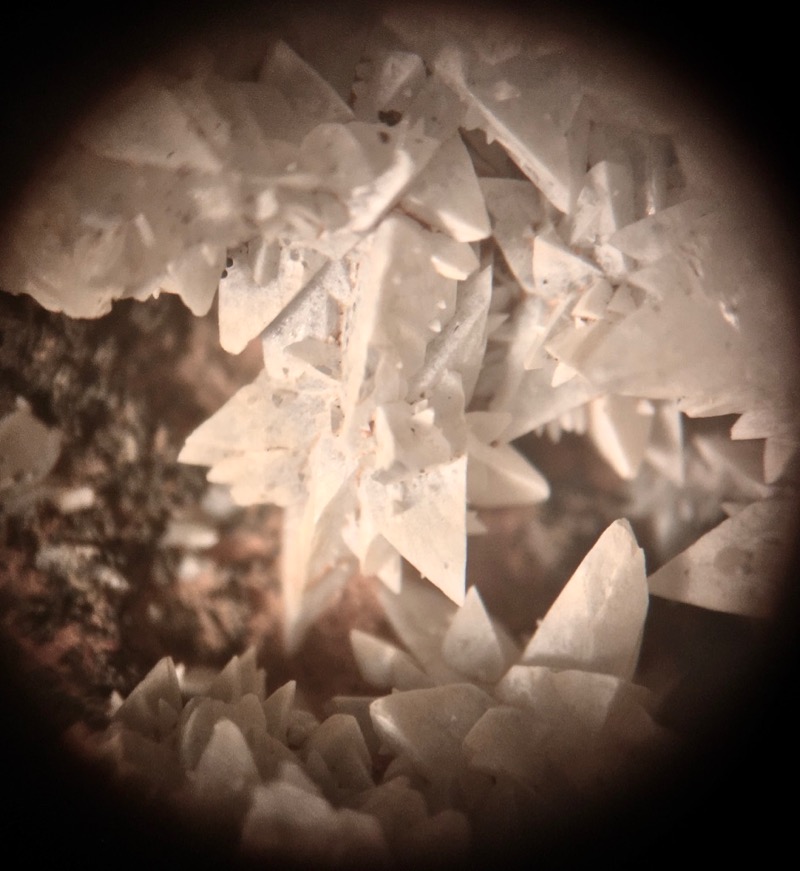
Psilomelane (manganese oxide) dendrites. Magnification 20x.
Weathered Selenite crystal. Magnification 20x.
The quartzose silcrete of the Strzelecki Track formed in the Tertiary Era, as a duricrust formed through silica rich mineral deposition from groundwater at the low lying fringes of the Flinders Ranges. It appears to be cryptocrystalline in nature, made of a minute crystal structure also typical of chert and chalcedony.
Highly resistant to weathering, the silcrete formation reveals some very finely detailed fossil casts of vegetation. The fossils in this formation contain casts of plant detritus of varying species, one of which appears to be Casuarina.

This formation has intriguing layering of well preserved crushed quartz, silcrete and sand calcite balls as seen in this vertically upturned rock. Continue reading “Silcrete of the Strzelecki Track”

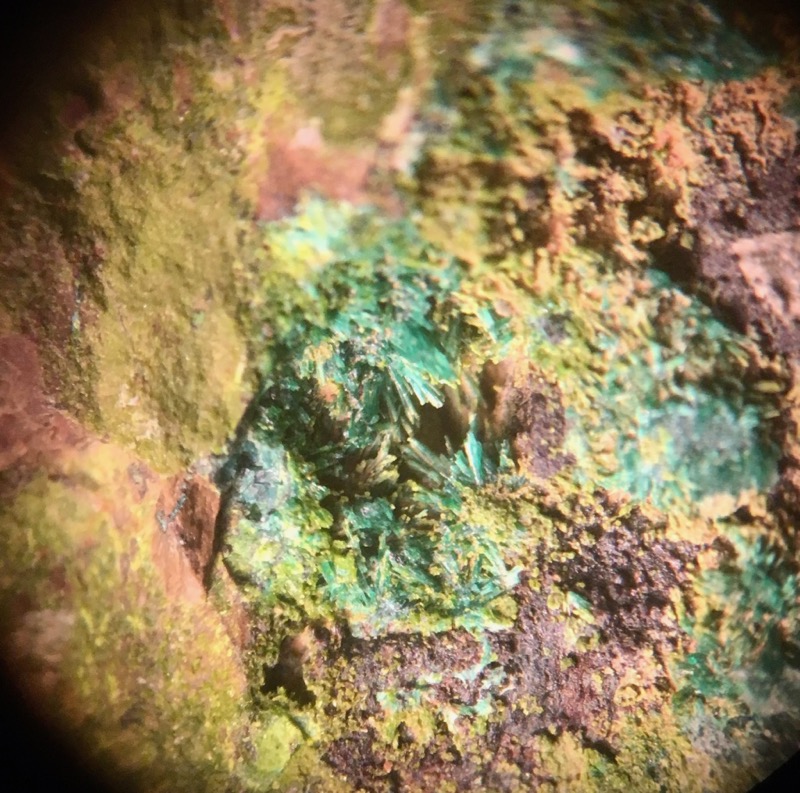
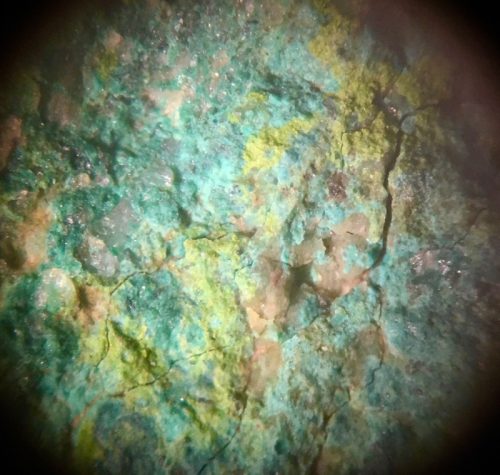
20x magnification
Chrysocolla included Calcite
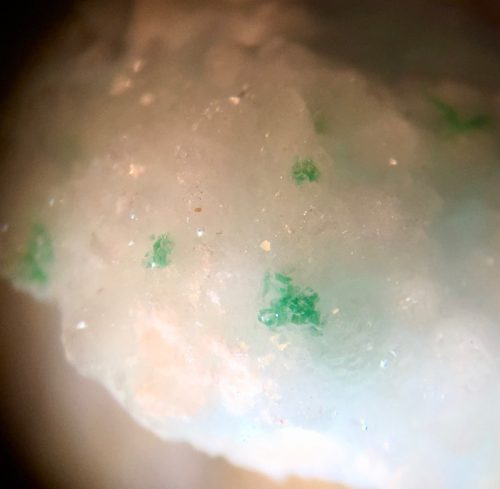
Chrysocolla covered with Calcite